Hounds
Hounds approved for hound hunting include the Beagle, Bloodhound and Harrier. Descriptions, provided by the Kennel Club, London for each of these hounds, are shown below. Photos of Champion Harriers are shown at bottom of page.
Beagle
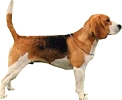
| General Appearance | A sturdy, compactly-built hound, conveying the impression of quality without coarseness. |
| Characteristics | A merry hound whose essential function is to hunt, primarily hare, by following a scent. Bold, with great activity, stamina and determination. Alert, intelligent and of even temperament. |
| Temperament | Amiable and alert, showing no aggression or timidity. |
| Head And Skull | Fair length, powerful without being coarse, finer in the bitch, free from frown and wrinkle. Skull slightly domed, moderately wide, with slight peak. Stop well defined and dividing length, between occiput and tip of nose, as equally as possible. Muzzle not snipy, lips reasonably well flewed. Nose broad, preferably black, but less pigmentation permissible in lighter coloured hounds. Nostrils wide. |
| Eyes | Dark brown or hazel, fairly large, not deep set or prominent, set well apart with mild appealing expression. |
| Ears | Long, with rounded tip, reaching nearly to end of nose when drawn out. Set on low, fine in texture and hanging gracefully close to cheeks |
| Mouth | The jaws should be strong, with a perfect, regular and complete scissor bite, i.e. the upper teeth closely overlapping the lower teeth and set square to the jaws. |
| Neck | Sufficiently long to enable hound to come down easily to scent, slightly arched and showing little dewlap. |
| Forequarters | Shoulders well laid back, not loaded. Forelegs straight and upright well under the hound, good substance, and round in bone, not tapering off to feet. Pasterns short. Elbows firm, turning neither in nor out. Height to elbow about half height at withers. |
| Body | Topline straight and level. Chest let down to below elbow. Ribs well sprung and extending well back. Short in the couplings but well balanced. Loins powerful and supple, without excessive tuck-up. |
| Hindquarters | Muscular thighs. Stifles well bent. Hocks firm, well let down and parallel to each other. |
| Feet | Tight and firm. Well knuckled up and strongly padded. Not hare-footed. Nails short. |
| Tail | Sturdy, moderately long. Set on high, carried gaily but not curled over back or inclined forward from root. Well covered with hair, especially on underside. |
| Gait/Movement | Back level, firm with no indication of roll. Stride free, long reaching in front and straight without high action; hind legs showing drive. Should not move close behind nor paddle nor plait in front. |
| Coat | Short, dense and weatherproof. |
| Colour | Tricolour (black, tan and white); blue, white and tan; badger pied; hare pied; lemon pied; lemon and white; red and white; tan and white; black and white; all white. With the exception of all white, all the above mentioned colours can be found as mottle. No other colours are permissible. Tip of stern white. |
| Sizes | Desirable minimum height at withers: 33 cm (13 ins). Desirable maximum height at withers: 40 cm (16 ins). |
| Faults | Any departure from the foregoing points should be considered a fault and the seriousness with which the fault should be regarded should be in exact proportion to its degree and its effect upon the health and welfare of the dog. |
| Notes | Male animals should have two apparently normal testicles fully descended into the scrotum. |
Last Update: 12 Mar 2012
Bloodhound
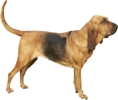
| General Appearance | Noble and dignified expression, characterised by solemnity, wisdom and power. |
| Characteristics | Possesses in a most marked degree every point and characteristic of those dogs which hunt together by scent (Sagaces). Very powerful, standing over more ground than is usual with hounds of other breeds. Skin relatively loose. |
| Temperament | Affectionate, neither quarrelsome with companions nor with other dogs. Somewhat reserved and sensitive. |
| Head And Skull | Head narrow in proportion to length and long in proportion to body, tapering slightly from temples to muzzle, thus when viewed from above and in front having an appearance of being flattened at sides and of being nearly equal in width throughout entire length. In profile upper outline of skull is nearly in same plane as that of foreface. Length from end of nose to stop not less than that from that from stop to back of occipital protuberance. Entire length of head from posterior part of occipital protuberance to end of muzzle 30cms (12 ins) or more in dogs and 28cms (11 ins) or more in bitches. Skull is long and narrow, with occipital peak pronounced. Foreface long, deep and of even width throughout, with square outlines when seen in profile. Head furnished with only a small amount of loose skin. Nostrils large and open. In front, lips falling squarely making a right angle with upper line of foreface. |
| Eyes | Medium size, dark brown or hazel, neither sunken nor prominent, the lids being oval in shape and meeting the cornea (front window of the eye) perfectly without any irregularity in their contour. Eyes should be free from any interference from the eyelashes. Signs of any obvious eye irritation must be heavily penalised. |
| Ears | Thin and soft to the touch, long, set on low and falling in graceful folds, lower parts curling inwards and backwards. |
| Mouth | Jaws strong with a perfect, regular and complete scissor bite, i.e. Upper teeth closely overlapping lower teeth and set square to the jaws. |
| Neck | Long. |
| Forequarters | Shoulders muscular and well sloped. Forelegs straight, large, round in bone with elbows well set in. Pasterns strong. |
| Body | Ribs well sprung, chest well let down between forelegs forming a deep keel. Back and loins strong, the latter deep and slightly arched. |
| Hindquarters | Thighs and second thighs very muscular. Hocks well let down, bent and squarely set. |
| Feet | Strong and well knuckled up. |
| Tail | (Stern) Long, thick, tapering to a point, set high with moderate amount of hair underneath. Carried scimitar fashion, but not curled over back or corkscrew any time. When moving carried high. |
| Gait/Movement | Elastic, swinging free. |
| Coat | Smooth, short and weatherproof. |
| Colour | Black and tan, liver and tan (red and tan) and red. Darker colours sometimes interspersed with lighter or badger coloured hair and sometimes flecked with white. Smalt amount of white permissible on chest, feet and tip of tail. |
| Sizes | Height: Adult dogs 66 cms (26 ins) Adult bitches 61 cms (24 ins) Dogs usually vary from 63-69 cms (25-27 ins) Bitches usually vary from 58-63 cms (23-25 ins) Mean average weight: Adult Dogs 41 kgs (90 lbs) in fair condition. Adult Bitches 36 kgs (80 lbs) in fair condition. Dogs attain the weight of 50 kgs (110 lbs). Bitches attain the weight of 45.5 kgs (100 lbs). Hounds of the maximum height and weight preferred, providing that quality, proportion and balance combine. |
| Faults | Any departure from the foregoing points should be considered a fault and the seriousness with which the fault should be regarded should be in exact proportion to its degree and its effect upon the health and welfare of the dog. |
| Notes | Male animals should have two apparently normal testicles fully descended into the scrotum. |
Last Update: 22 May 2009
Harrier
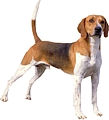
(See Photos below)
| General Appearance | The points of the modern Harrier are very similar to those of the Foxhound. The Harrier however is smaller than the Foxhound: the most popular size is 19 to 21 inches (48.26 to 53.34 cm) Proportion - is off square. The Harrier is slightly longer from point of shoulder to rear projection of the upper thigh than from withers to ground. He is active, well balanced, full of strength and quality. |
| Characteristics | A natural ability to hunt. Normally hunted on horse, but slower in pace than the Foxhound enabling him to be followed on foot. |
| Temperament | Friendly and not aggressive. Essentially a Pack Hound. |
| Head And Skull | Medium size. Slight Stop; eyebrows very prominent, giving the appearance of a bold forehead with plenty of expression. Skull well balanced, slightly rounded with a slight occiput and of medium width. Muzzle in balance with skull, neither snipy nor truncated, the flews of the upper lip just cover the under jaw. The nostrils large. |
| Eyes | Medium size, set well apart, brown or hazel colour in darker dogs, lighter hazel in lighter coloured dogs, though darker eye colours are always desired. |
| Ears | Leathers pendent, with the leading edge lying close to the cheeks. Set on just above the level of the eye. The ears may be raised when alert. |
| Mouth | Jaws strong with a perfect, regular and complete scissor bite: ie. Upper teeth closely overlapping lower teeth and set square to the jaws. |
| Neck | Of ample length, well arched, well developed without being coarse. Clean and tapering. |
| Forequarters | Shoulders well laid back, sloping into muscles of back. Clean and not loaded. Forelegs long, straight and well boned down to feet, but not overburdened. Pasterns strong with slight indication of spring. Point of elbows set away from the ribs, running parallel with the body and neither turning inwards nor outwards. |
| Body | Chest deep, ribs well sprung and running well back with plenty of heart room. Back broad and level, not dipping behind the withers, slight arching over the loin. |
| Hindquarters | Powerful, with muscular first and second thighs. Stifles well angled. Hocks well let down and viewed from behind, stand square. Well boned down to feet. |
| Feet | Neither too tight nor too round. Well padded with well arched toes. Nails strong. Dewclaws optional. |
| Tail | In balance with the rest of the dog, set high and carried up from 12 o'clock to 3 o'clock, depending on attitude. The tail is strong at the butt; tapers to a point. Tail is well covered with hair, especially on underside where the hair is slightly longer. The tail should not be curled over the back. |
| Gait/Movement | Free, long striding tireless movement. Good reach in front without high action. Good drive behind with no inclination to roll. |
| Coat | Short, dense, hard and glossy. Weatherproof. |
| Colour | Any recognised hound colour and markings. Usually with a white tip on the stem. |
| Sizes | Height 48.26 to 53.34 cm. (19 to 21 inches). |
| Faults | Any departure from the foregoing points should be considered a fault and the seriousness with which the fault should be regarded should be in exact proportion to its degree and its effect upon the health and welfare of the dog. |
| Notes | Males animals should have two apparently normal testicles fully descended into the scrotum. |
Photos showing some Harrier Champions
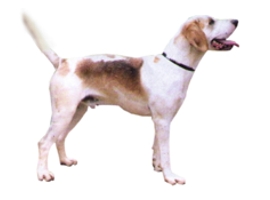
Waverley Harriers – Best Resricted Dog Hound
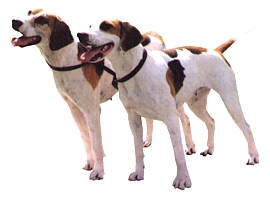
Pendle Forest & Craven Harriers – Best Couple Harrier Bitches
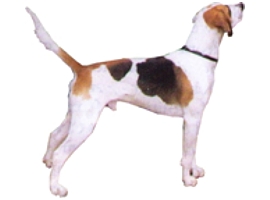
Pendle Forest & Craven Harriers – Champion Dog Hound

High Peak Harriers – Best Bitch Couple
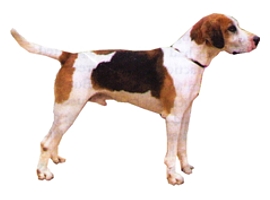
Dunstan Harriers – Best Stallion Hound
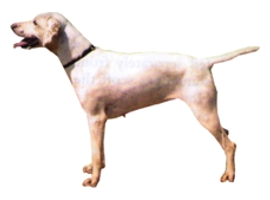
Aldenham Harriers – Best Entered Bitch
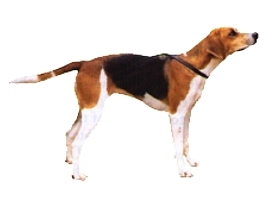
Champion Harrier Taunton Vale Laura
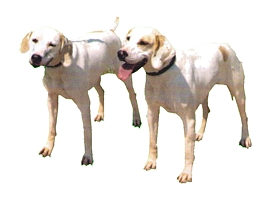
Best Couple Harrier Bitches Axe Vale Tangle & Tash
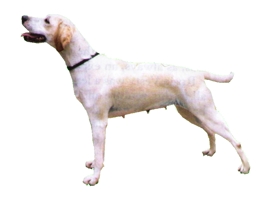
Dunstan Harriers – Best Brood Bitch
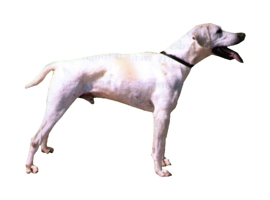
Best Harrier Reserve Champion Dark Vale & S. Pool Winston

